Rats in Indiana: Types, Facts, & Tips for Homeowners
-
Greg Iacono
- Last updated:
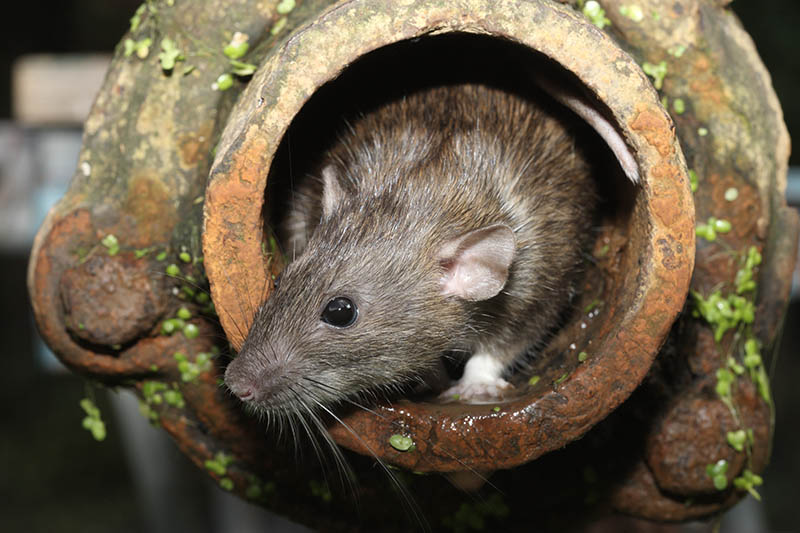
Few mammals conjure up powerful emotions more than the rat. Amazingly, rats and other rodents make up the largest group of mammals on the planet and can be found on every continent except Antarctica. Rats are highly adaptable, breed incredibly fast, and, worst of all, carry around 60 different diseases.
Rats can survive living in deplorable conditions and will eat practically anything (including their poop). If you live in Indiana and have a rat problem in your home, it’s almost guaranteed they will be one of just two species of rat. Below you’ll find real-world, actionable tips and facts on how to get rid of (or at least control) these two types of rats. Read on to discover more than you probably ever wanted to know about rats in Indiana.
The 2 Types Of Rats in Indiana
1. Brown Rat (aka Norway rat, sewer rat, street rat, gray rat)
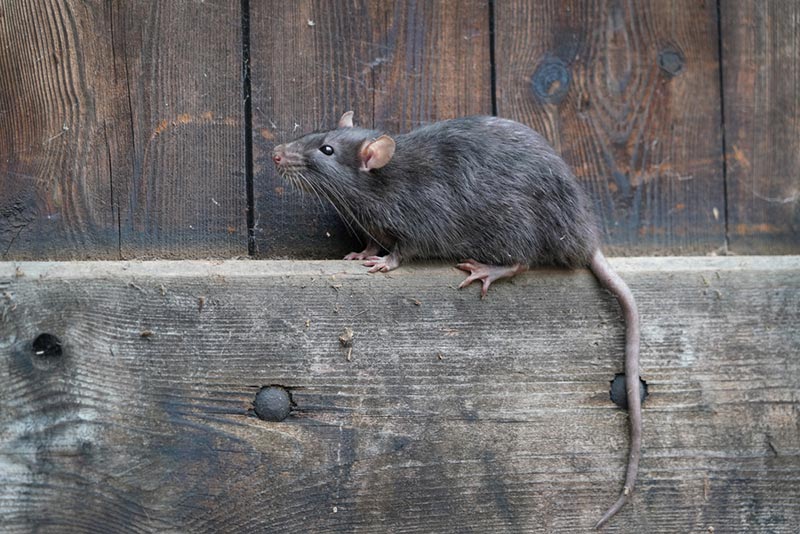
| Scientific Name: | Rattus norvegicus |
| Size: | 6–11 inches |
| Lifespan: | 1–3 years |
| Habitat: | Farmland, grassland, coastal, wetlands, urban areas |
| Diet: | Omnivore |
Like all rat species, the brown rat can adapt to live almost anywhere and is found around the globe. That includes Indiana, of course, where they tend to live in and around cities, towns, and inside individual homes. The brown rat is the most common of the two rat species living in the Hoosier State.
Brown rats are also known by several names, so if you hear someone refer to a sewer rat, Norway rat, or gray rat, they’re all talking about Rattus norvegicus, the brown rat. Even though the scientific name refers to Norway, the brown rat didn’t originate there; instead, it is believed to have come to the US from China or Mongolia.
Around cities and larger towns, brown rats live more in the sewers than anywhere else. In smaller Indiana towns, however, they live in the woods, backyards, and inside homes if they find a nice spot.
2. Black Rat (aka roof rat, ship rat)
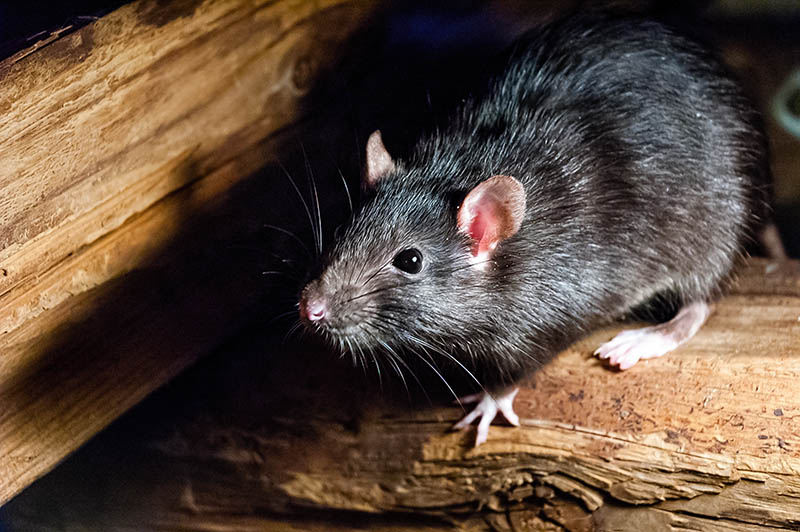
| Scientific Name: | Rattus rattus |
| Size: | 6–8 inches |
| Lifespan: | 1–4 years |
| Habitat: | Forest, woodlands, grasslands, tundra, mangroves, urban areas |
| Diet: | Omnivore |
One of the more fascinating facts about the black rat is that its tail is longer than its entire head and body. Also, even though they’re called black rats, they are more grey and brown than black. Like their cousin, the squirrel, black rats can climb exceptionally well, and you’ll often find them running along telephone wires. They use their long tails to balance themselves.
Black rats are called “roof rats” because they can often be found nesting in the roof rafters of Indiana homes. Like most rat species, the black rat eats a wide range of foods. However, they are a bit pickier than some of the other species. What’s truly interesting about black rats is that they form packs that are led by a dominant female.
Black rats also have a highly developed sense of hearing, smell, and touch and can see well in the dark. That’s good (at least for them) because they are nocturnal animals and forage at night.
Facts About Brown Rats
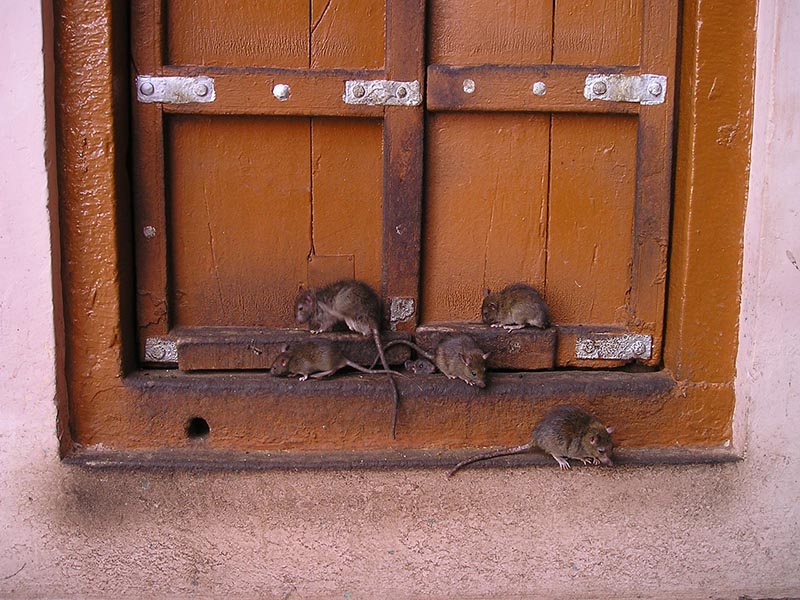
Below, you will find a variety of fascinating facts about brown rats, including how they breed, their social hierarchy, and more.
- Brown rat females can start breeding at 3 months of age and have five litters per year. Each litter can yield up to 12 rat babies.
- As a subspecies of the brown rat, the fancy rat was bred to be a pet. They are often found as therapy animals and can also be trained to detect gunpowder and aid forensic teams in their investigations.
- Although many believe that brown rats spread bubonic plague, the deadly disease is more often spread by ground squirrels.
- Unlike many rodents with hairless tails, the brown rat has a long, furry tail.
- Brown rats have been known to chew through electrical cables, sewer pipes, and even gas pipes, causing significant damage to Indiana homes.
- Scientists have found that brown rats have a wide range of emotions and make short, ultrasonic sounds when they are happy, playing, or mating.
- You will find brown rats on every continent except Antarctica.
- Brown rats will often dig a burrow beneath a dog’s house and eat the dog’s food when it’s asleep.
- Ultrasonic and other sound devices to repel brown rats are ineffective because the rats quickly become accustomed to the noise.
To prevent brown rats from entering your home in Indiana, you shouldn’t have any holes or gaps larger than 1/2 inch across. If they’re larger than that, and they will be able to squeeze inside.
Facts About Black Rats
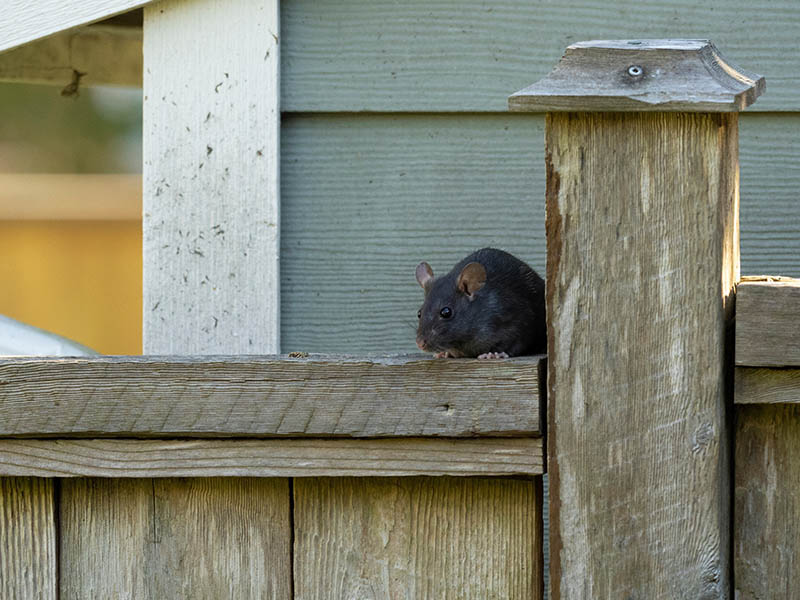
While brown rats and black rats have many similarities, they also have many differences, including their size, what they eat, where they live, etc. Below are several fascinating facts about the black rat.
- Although you can find black rats almost anywhere in the world, their cousin, the brown rat, has been more successful at adapting because they burrow into the ground. Black rats, on the other hand, tend to live in trees.
- Black rats are a bigger problem for farmers in Indiana because they feed on grain, corn, soybeans, and chicken eggs.
- The black rat has a well-developed sense of hearing that allows it to escape predators.
- Although they can live up to 4 years, most black rats in the wild only survive about 18 months. In captivity, however, black rats have been known to live upwards of 6 years.
- Both black and brown rats became widespread by hitching rides on large sailing vessels and other ships. Because of this ability to travel the world by ship, the brown rat is also referred to as the ship rat.
- In Northern New Zealand, black rats have constantly disrupted the forest industry because they feed on seedlings.
- In Australia, the black rat has been beneficial. They improve biodiversity by spreading fungal spores, which enhances the soil quality.
- Many animals feed on black rats, including foxes, coyotes, owls, and house cats.
- Black rats have smaller litters than brown rats, with around seven or eight babies in each litter compared to 11 or 12 for brown rats.
- Due to breeding efforts in the United Kingdom during the 1920s, some brown rats have grey, white, and even greenish fur.
- Brown and black rats groom and clean themselves more often than cats and are very clean mammals that hate getting dirty.
- Black rats run fast enough to keep up with a jogger at a typical pace, about 6.2 miles per hour.
- In India, black rats are considered holy and the loyal companion of their god Ganesha.
- Black and brown rats have incredible memories, which is why scientists often use them in their experiments.
Tips on Controlling Rats in Indiana
Rats, including the brown and black rats that are common in Indiana, are incredibly adaptable and, thus, difficult to eradicate. Rather than trying to do that, you can best use methods to prevent them from infesting your home and yard. Below are some of the best.
Forget About Using Traps
Trying to control rats by putting out traps is usually a fruitless endeavor. Rats are highly intelligent and avoid anything new they find in and around their habitat. Also, once they realize that a trap is “bad,” they will avoid it and teach their siblings and babies to avoid it. Poison is usually a better method of killing rats, but it has several drawbacks, including being toxic for pets and other animals.
Take Away Their Food Source
One of the main reasons for rat infestations is that they have easy access to food. You must also consider that rats will eat many types of food, including pet food, garbage, and uncooked grains. To prevent an infestation, storing your food correctly is essential.
That’s especially true if you have a dog that lives outside and gets fed outside. If you do, you should allow your dog to eat as much as possible and then save or throw away any remaining food. If you feed stray cats, do the same thing.
You must also secure your garbage so rats can’t chew their way into the garbage bag. Putting your trash in metal garbage bins is best, as rats can chew their way through plastic garbage bins. Lastly, if you put out bird seed and other food for birds, you should use hanging bird feeders that are rat-proof.
Call an Exterminator as a Last Resort
Because of our innate fear of rats, many folks will immediately call an exterminator if they see a rat around their Indiana home. While exterminators can eliminate your rat problem, most experts suggest contacting them last. That’s because exterminators use caustic and toxic chemicals to kill rats that can harm you, your family, and your pets.
The best way to prevent rats from becoming a problem around your Indiana home is to reduce their food source, seal any gaps in your home, and remove any debris in your yard where they like to live.
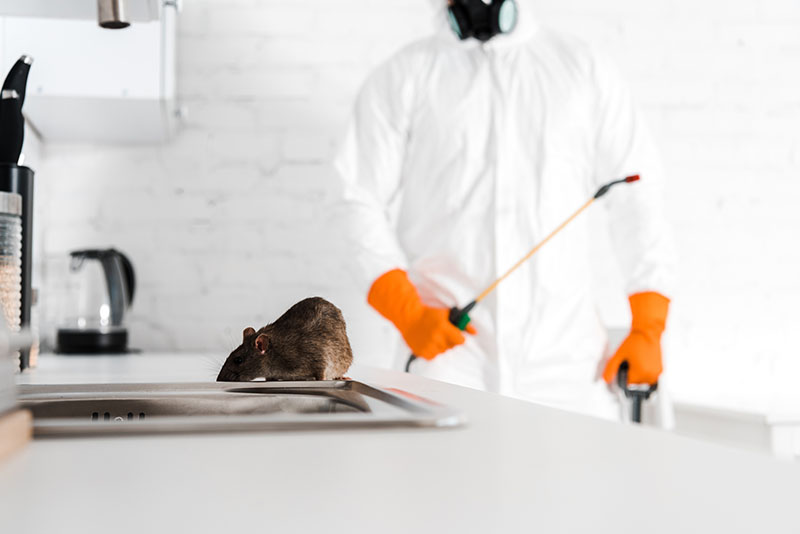
Be Persistent about Preventing Rat Infestations
The typical Indiana homeowner who sees a rat or two around their home immediately begins using efforts to eradicate them. However, those efforts usually wane and stop completely after a few days or weeks.
That’s a problem because rats will always return if they get the chance. In other words, if you see rats around your Indiana home, you need to use the rat control methods were talking about today and use them persistently.
Remove Piles of Brush in your Yard
While some rats will build a nest inside your home, most have burrows and other living areas in your yard. They love to dig under piles of brush and debris, so removing those is essential.
Close Holes, Gaps, and Cracks in your Indiana Home
We mentioned earlier that black rats could squeeze through a hole 1/2 inch in diameter or larger. That’s about the same diameter as a nickel. For that reason, any holes, gaps, and cracks in your home should be filled, caulked, or otherwise closed.
While rats might try to enter through the gaps around windows or doors, they typically gain access through vents and other holes in and around your roof.
Keep your Chickens Cooped Up Securely
Besides farmers, many folks in Indiana raise their own chickens at home. If you do, you must ensure their coop is very secure because rats will get in and kill your chickens and steal their chicken feed.
Final Thoughts
As we’ve seen today, only two types of rats live in Indiana: the brown rat and the black rat. Both are highly adaptive, will eat a wide variety of foods, and infest your home if you don’t use measures to prevent it. The good news is that, with diligent and persistent efforts, you can significantly reduce the number of rats in and around your Indiana home. The best way to do that is by removing any food source and ensuring rats can’t access your garbage, pet food, or wild bird seed.
We hope the information we provided has been helpful and that all of your questions have been answered. Best of luck using the methods, tips, and advice we’ve provided today to reduce or eliminate any rats around your Indiana home.
- https://extension.oregonstate.edu/news/tips-keeping-rats-out-home-garden
- https://www.animalfunfacts.net/rodents/115-rat.html
- https://www.maine.gov/DACF/php/gotpests/othercritters/documents/rats-ipm.pdf
- https://bpca.org.uk/Pest-Aware/brown-rat-control-how-to-get-rid-of-brown-rats-bpca-a-z-of-pests/189176
- https://animalia.bio/black-rat
- https://australian.museum/learn/animals/mammals/black-rat/#:~:text=The%20Black%20Rat%20lives%20in,and%20are%20very%20agile%20climbers.
- https://www.victorpest.com/articles/seven-rat-facts-cringe
- https://www.rentokil.co.id/en/my-pest-control-quick-tips/10-interesting-facts-about-rats/
- https://birdwatchinghq.com/mice-and-rats-in-indiana/
Featured Image Credit: Ernie Cooper, Shutterstock
Contents

